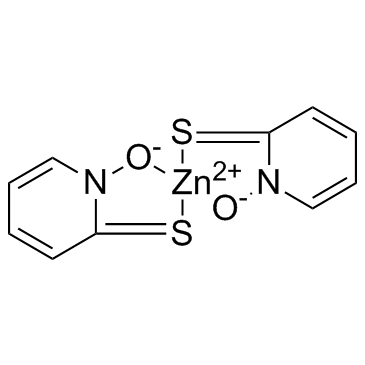Zinc pyrithione inhibits yeast growth through copper influx and inactivation of iron-sulfur proteins.
Nancy L Reeder, Jerry Kaplan, Jun Xu, R Scott Youngquist, Jared Wallace, Ping Hu, Kenton D Juhlin, James R Schwartz, Raymond A Grant, Angela Fieno, Suzanne Nemeth, Tim Reichling, Jay P Tiesman, Tim Mills, Mark Steinke, Shuo L Wang, Charles W Saunders
文献索引:Antimicrob. Agents Chemother. 55(12) , 5753-60, (2011)
全文:HTML全文
摘要
Zinc pyrithione (ZPT) is an antimicrobial material with widespread use in antidandruff shampoos and antifouling paints. Despite decades of commercial use, there is little understanding of its antimicrobial mechanism of action. We used a combination of genome-wide approaches (yeast deletion mutants and microarrays) and traditional methods (gene constructs and atomic emission) to characterize the activity of ZPT against a model yeast, Saccharomyces cerevisiae. ZPT acts through an increase in cellular copper levels that leads to loss of activity of iron-sulfur cluster-containing proteins. ZPT was also found to mediate growth inhibition through an increase in copper in the scalp fungus Malassezia globosa. A model is presented in which pyrithione acts as a copper ionophore, enabling copper to enter cells and distribute across intracellular membranes. This is the first report of a metal-ligand complex that inhibits fungal growth by increasing the cellular level of a different metal.
相关化合物
| 结构式 | 名称/CAS号 | 分子式 | 全部文献 |
|---|---|---|---|
 |
吡啶硫酮锌
CAS:13463-41-7 |
C10H8N2O2S2Zn |
|
Acute toxicities of five commonly used antifouling booster b...
2011-05-01 [Mar. Pollut. Bull. 62(5) , 1147-51, (2011)] |
|
Effects of seven antifouling compounds on photosynthesis and...
2012-10-01 [Arch. Environ. Contam. Toxicol. 63(3) , 365-77, (2012)] |
|
Immunotoxicity in ascidians: antifouling compounds alternati...
2015-03-01 [Comp. Biochem. Physiol. C. Toxicol. Pharmacol. 169 , 16-24, (2015)] |
|
New insights on dandruff/seborrhoeic dermatitis: the role of...
2011-10-01 [Br. J. Dermatol. 165 Suppl 2 , 18-23, (2011)] |
|
Restoration of ion channel function in deafness-causing KCNQ...
2012-04-01 [Br. J. Pharmacol. 165(7) , 2244-59, (2012)] |